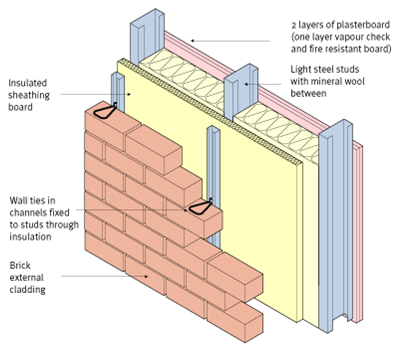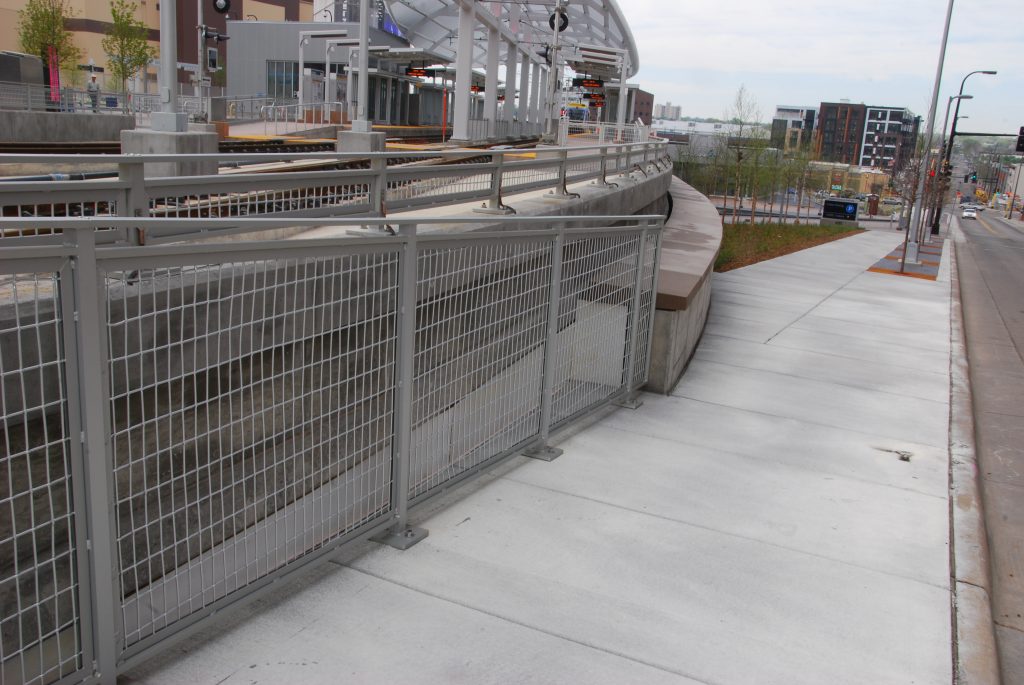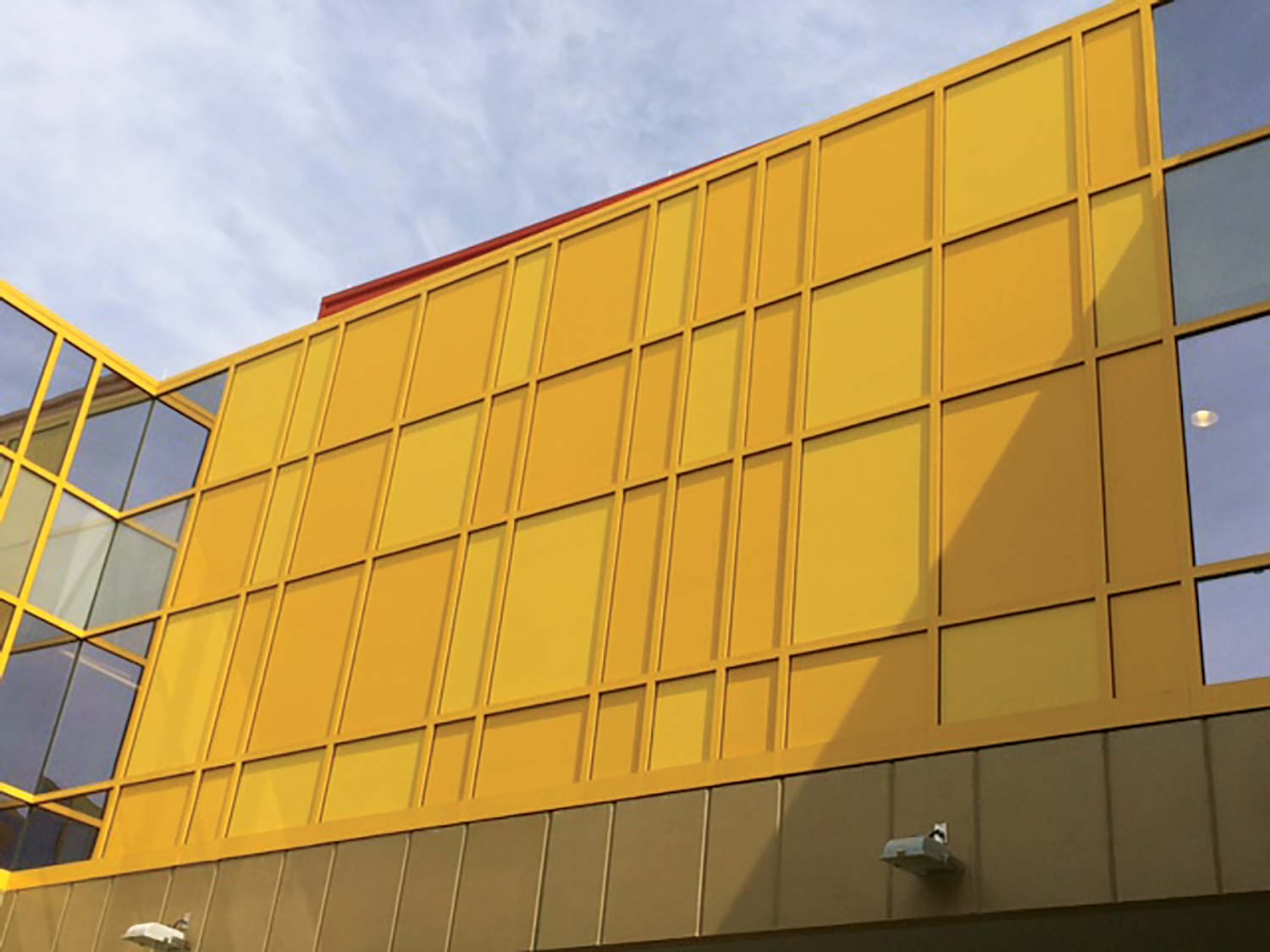10 Simple Techniques For In Fill Panels
Table of ContentsThe 30-Second Trick For In Fill PanelsThe Ultimate Guide To In Fill PanelsIn Fill Panels Can Be Fun For EveryoneThe Ultimate Guide To In Fill Panels
Infill walls are typically mounted on site as individual aspects that are pre-cut to size but they can be pre-fabricated as big panels with the cladding currently affixed (in fill panels). The exact same components might be used for inner separating wall surfaces, but below the primary issues are fire resistance and also acoustic insulation rather than resistance to.loading. A small internal pressure is utilized in the design of inner separating walls. @&&h2@ [leading]
Sorts of
The Definitive Guide for In Fill Panels
infill walling @&&/h2@ Numerous forms of construction can be used to develop infill wall surfaces that span between floorings in steel or concrete buildings. Commonly, infill wall surfaces made use of stonework or lumber, however the modern form of building and construction makes use of light steel C areas that span in between the floorings as well as around openings. The C sections are positioned at a routine spacing depending on the outside faade materials, and at a spacing which is likewise suitable with standard plasterboard as well as sheathing board dimensions. @&&h3@ [top]
Light steel framed infill wall surfaces @&&/h3@ In multi-storey mounted building, it is currently typical technique to utilize light steel infill wall surfaces to create a fast completely dry envelope to sustain the outside cladding. The very same type of construction may be made use of as separating or area walls in between different parts of the structure. Using light steel infill walls may be related to steel or concrete mounted building. Lightweight, rate and convenience of installment are very important constructional advantages that have actually resulted in the fast rise being used of this form of building.
The light steel elements made use of in infill walls is composed of C areas and U sections of.
The Basic Principles Of In Fill Panels


75 to 150 mm deepness that are cool roll-formed from galvanized steel strip of 1. 2 mm thickness defined to BS EN 10346. The galvanizing( zinc layer) offers excellent durability. The C areas are put at 400 or 600mm spacing and pairs of C areas might be used alongside big openings. Wall surface panels can be pre-fabricated as storey-high units or, regularly, are website put together from C areas that are supplied cut-to-length. The second strategy is usually the only solution in restoration applications where resistances in the original building and construction have actually to be accommodated. Site set up light steel wall surfaces in a steel mounted structure Pre-fabricated light steel infill wall surface panels in a steel mounted structure Infill walls consist of a lower' track' connected to the floor and a top' track' affixed to the bottom of the floor above. This motion is vital in concrete frames, where 2 to 3 mm shortening of the concrete structure per flooring can occur over time as well as typical structural movements. The vertical C areas are made to extend 2. 4 to 5m in between floorings, and also to stand up to wind lots or various other tons in flexing. The straight C sections above and also below the home windows transfer lots back to the upright C sections. One or two layers of' fire-resistant' plasterboard( complying with BS EN 520, Type F) to the interior face supply for approximately 90 mins fire resistance to the light steel infill wall surface. pop over to this site @&&h3@ [leading] Light steel separating walls @&&/h3@ Pre-fabricated light steel wall surface panels Light steel dividing walls utilize similar components to.
light steel infill wall surfaces and also are utilized to give acoustic separation and fire compartmentation between occupancies or distinct components of the building. For both of these functions, double layers wall surfaces are normally specified in order to achieve the required acoustic depletion in between occupancies. The structural loading for inner wall surfaces is fairly low and also is typically taken into consideration to represent an inner stress of 0. 5 k, N/m . The C sections are usually much thinner than in exterior wall surfaces( generally 0. 9mm thick )and gain some benefit of the rigidity of the plasterboard dealt with on the exterior. Partitions are not needed to have.
acoustic or fire functions therefore are solitary leaf wall surfaces making up C areas of 55 to. in fill panels.
The smart Trick of In Fill Panels That Nobody is Talking About

90mm depth, relying on the wall elevation, with solitary layers of plasterboard on each side. @&&h3@ [top] Masonry infill wall surfaces @ & &/ h3 @. Walls constructed from clay blocks or cinder block are the typical kind of infill wall construction. Nonetheless, using block-work infill walls has minimized recently because it is an untidy as well as time consuming site operation, and also needs check my source a huge quantity of materials dealing with. From a design perspective, enhancing articles are needed alongside huge window openings, as the masonry is not sufficiently solid to stand up to the high regional wind lots alongside these openings. @&&h3@ [leading] Concrete infill wall surfaces @&&/h3@ Pre-cast concrete infill wall panels Concrete infill wall surfaces are generally in the kind of big precast concrete panels that are storey high as well as frequently of a width determined by the column spacing. These big panels may be leading put up or bottom sustained. They normally bear onto the floor piece
making use of a boot plan, and are bolted back to the framework on the level over or below. Indispensable panels might be clad in various other materials( typically concrete panels are outfitted in rock) - in fill panels. Panel weights of around 300kg/m are normal, with panel sizes of in between 3 as well as 9m as well as height of 3. 2m. The maximum dimension of panel is restricted by transportation considerations and also crane lifting ability( both on site and also at the concrete jobs). 15 to 20 tonnes are normal optimum weights of precast concrete panels. @&&h3@ [top]. Hardwood mounted infill wall surfaces @&&/h3@ Wood infill wall surfaces use standard timber areas Read Full Article of 90.

as well as 140mm deepness to period 2. 4 to 3. 6m between floorings as well as are similar in form to light steel infill walls. Timber sections are cut to size and are placed at 400 mm or 600 mm spacing. The disadvantage of lumber in contrast to steel is that it is not as strong and it is not feasible to utilize it in high wall surfaces or in wall surfaces with big openings. @&&h2@ [leading] Advantages of light steel infill as well as separating wall surfaces @&&/h2@